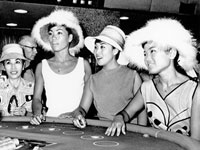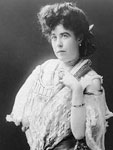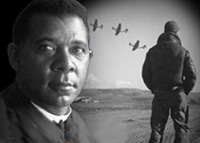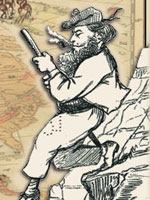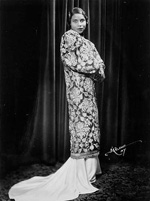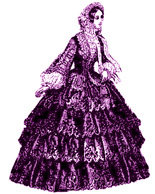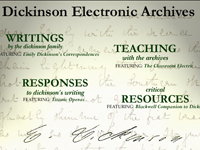This marks the beginning of a series of film reviews reprinted from the Journal of American History. These reviews model ways of looking critically at popular films, documentaries, miniseries, and other history-based features. Look for one each month!
Titanic: History or Hollywood?
In December 1997, I underwent a metamorphosis (temporary, I hope) from cultural historian to "Titanic historian." As such, I was repeatedly called upon to assess the "historical accuracy" of James Cameron's movie.
How, in short, might we really locate this movie in time?
This, I tried to explain, was a task better left to others, especially to the subset of Titanic buffs known derisively as rivet counters, since what the questioners usually meant by historical accuracy largely had to do with the verisimilitude of the movie's sets and special effects—for example, did Cameron get the carpets right? The best I could do was point out a few of the most obvious anachronisms: Rose (Kate Winslet) using Tom Wolfe's phrase "masters of the universe" to describe her fellow first-cabin passengers; Jack (Leonardo DiCaprio) quoting Bob Dylan—"When you got nothin', you got nothin' to lose"—to assert his free-spiritedness; Pablo Picasso's Les Demoiselles d'Avignon apparently going down with the ship.
And so on. Very soon, however, this line of inquiry loses its interest. "Is this history or Hollywood?" I was asked at the end of a History Channel program called Movies in Time, as if it has to be one or the other, unvarnished or embellished, accurate or inaccurate. When a film costs and earns more than any other, when it becomes a major cultural phenomenon, we ought to be asking questions about Titanic's historical significance rather than its accuracy. How might we explain its resonance? How might we contextualize it? How might we compare it to previous representations of the disaster? How, in short, might we really locate this movie in time?
Revisionism in Titanic
In the wake of Titanicmania, several critics took on these broader questions. Frank Rich observed in the New York Times that Titanic "was destined to be truer to 1997 than 1912, no matter how faithfully the director, James Cameron, reproduced every last brandy snifter of the White Star Line."
This costless liberation marks the movie as what Rich calls "very much a 90's take on the familiar Titanic themes of gender and class."
In Rich's view, Cameron's "rich-bashing populism"—the fact that the first-class passengers are despicable almost without exception—signals that a resentment of the wealthy and powerful is bubbling beneath the surface of our apparent prosperity and contentment. Rich also described Winslet's Rose as a "feminist heroine who defies her stuffy First Class compatriots to take up with a guy in steerage."
Seeking an explanation for the movie's popularity with girls and women, Katha Pollitt in the Nation pointed to the anti-macho, androgynous, quasi-maternal figure of DiCaprio's Jack. The movie's "feminism," Pollitt wrote, is a "women's fantasy" of "costless liberation brought to you by a devoted, selfless, charming, funny, incredibly handsome lover."
This costless liberation marks the movie as what Rich calls "very much a 90's take on the familiar Titanic themes of gender and class." Through Jack, Rose learns to feel good about herself, to overcome oppression by overcoming repression. She dances with the steerage, stands on the bow with the breeze blowing through her hair, poses nude, has sex in a car in the ship's hold. The disaster is presented here for the first time as a kind of therapy: for Rose, the burdens of gender and class are swept away by Jack and the sea, even though her nasty mother and fiance survive. True to Hollywood's therapeutic ethos, Titanic depicts liberation as a matter of attitude rather than politics, self-actualization rather than collective struggle.
Contemporary Interpretations of the Disaster
Cameron's revisionism is thrown into relief when we compare his handling of these themes with earlier versions of the disaster. In 1912, most stories of the wreck gave the first-cabin men a monopoly on heroism. A widely published wire service report envisioned John Jacob Astor and other first-class heroes "stepping aside, bravely, gallantly remaining to die that the place [they] otherwise might have filled could perhaps be taken by some sabot-shod, shawl-enshrouded, illiterate, and penniless peasant woman of Europe."
Feminists and working-class radicals interpreted the disaster as a catalyst to collective action.
While Hollywood has not yet reached the point where the characters listed in Titanic's credits as "Syrian woman" or "Chinese man" occupy center screen, neither do the darker-skinned steerage passengers have a monopoly on panic as they did in 1912 depictions. Nor does Jack's heroism appear to be a racial trait. "The Anglo-Saxon may yet boast that his sons are fit to rule the earth," read an April 19, 1912, editorial in the Atlanta Constitution, "so long as men choose death with the courage they must have displayed when the great liner crashed into the mountains of ice, and the aftermath brought its final test."
The movie's "feminism" also stands in stark contrast to the antifeminist "lessons" that the disaster called forth in 1912. First-cabin chivalry, nowhere in evidence in Cameron's Titanic, was widely invoked as an argument against women suffrage. "Let the suffragists remember this," advised a letter to the editor in the Baltimore Sun. "When the Lord created woman and placed her under the protection of man he had her well provided for. The Titanic disaster proves it very plainly." A letter in the St. Louis Post-Dispatch put it even more bluntly: "I suggest, henceforth, when a woman talks woman's rights, she be answered with the word Titanic, nothing more—just Titanic." The movie clearly suggests that "the law of the sea"—"Women and Children First"—was the result, not of chivalry, but of the officers' orders, enforced at gunpoint.
Unlike Cameron's apolitical hero and heroine, those who resisted these "lessons" about class and gender in 1912 did so in explicitly political terms. Feminists and working-class radicals interpreted the disaster as a catalyst to collective action. "To the woman-heart of the nation this is not a tragedy to mourn and grieve over and forget," wrote the suffragist Agnes Ryan in the Woman's Journal;
it is simply typical of the countless lives that perish needlessly each year from the Ship of State! It gives new proof that the State needs women in law-making and law-enforcing, and it gives new impetus to the Votes for Women movement.
An Italian anarchist newspaper in Buffalo insisted that capitalists were to blame for the Titanic and all the lesser known disasters of industrial society, because they
uphold a society which considers profit more important than human life. . . . We, who struggle with every weapon at our disposal to overthrow the present social system, will avenge one day not too far distant all of your victims, including those of the "Titanic."
Compared to this, the movie that Newsweek called "quasi-Marxist" seems very nineties indeed.
Two hundred million dollars buys an awful lot of popular memory. But Cameron's Titanic is not the first attempt to tell the definitive story of the disaster, nor is it likely to be the last. "Historical accuracy" aside, the eighty-six-year effort to define the Titanic's significance may be the most compelling story of all.
